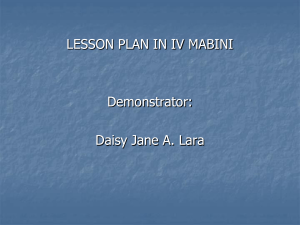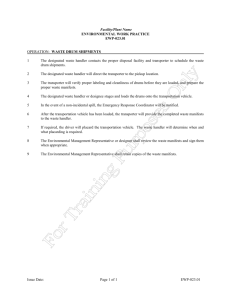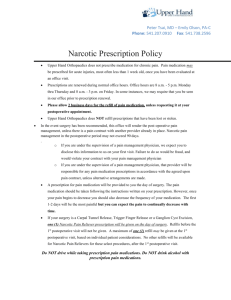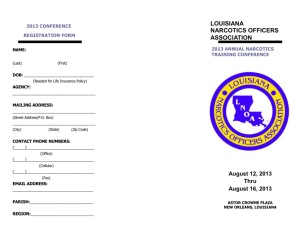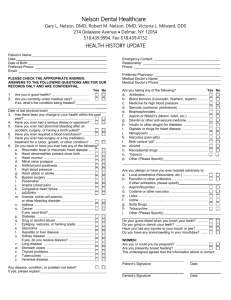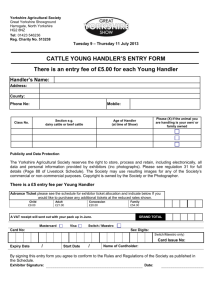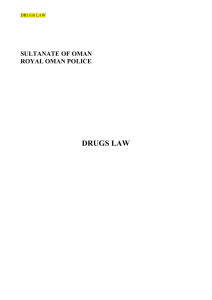NTPDA Narcotics Scenarios
advertisement
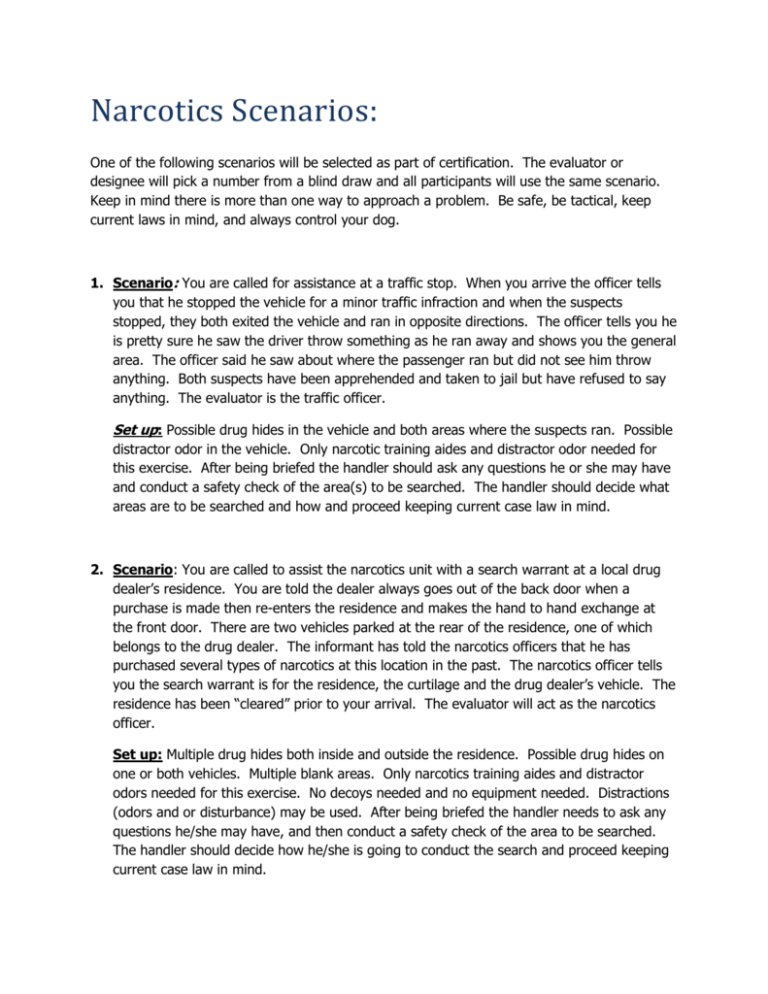
Narcotics Scenarios: One of the following scenarios will be selected as part of certification. The evaluator or designee will pick a number from a blind draw and all participants will use the same scenario. Keep in mind there is more than one way to approach a problem. Be safe, be tactical, keep current laws in mind, and always control your dog. 1. Scenario: You are called for assistance at a traffic stop. When you arrive the officer tells you that he stopped the vehicle for a minor traffic infraction and when the suspects stopped, they both exited the vehicle and ran in opposite directions. The officer tells you he is pretty sure he saw the driver throw something as he ran away and shows you the general area. The officer said he saw about where the passenger ran but did not see him throw anything. Both suspects have been apprehended and taken to jail but have refused to say anything. The evaluator is the traffic officer. Set up: Possible drug hides in the vehicle and both areas where the suspects ran. Possible distractor odor in the vehicle. Only narcotic training aides and distractor odor needed for this exercise. After being briefed the handler should ask any questions he or she may have and conduct a safety check of the area(s) to be searched. The handler should decide what areas are to be searched and how and proceed keeping current case law in mind. 2. Scenario: You are called to assist the narcotics unit with a search warrant at a local drug dealer’s residence. You are told the dealer always goes out of the back door when a purchase is made then re-enters the residence and makes the hand to hand exchange at the front door. There are two vehicles parked at the rear of the residence, one of which belongs to the drug dealer. The informant has told the narcotics officers that he has purchased several types of narcotics at this location in the past. The narcotics officer tells you the search warrant is for the residence, the curtilage and the drug dealer’s vehicle. The residence has been “cleared” prior to your arrival. The evaluator will act as the narcotics officer. Set up: Multiple drug hides both inside and outside the residence. Possible drug hides on one or both vehicles. Multiple blank areas. Only narcotics training aides and distractor odors needed for this exercise. No decoys needed and no equipment needed. Distractions (odors and or disturbance) may be used. After being briefed the handler needs to ask any questions he/she may have, and then conduct a safety check of the area to be searched. The handler should decide how he/she is going to conduct the search and proceed keeping current case law in mind. 3. Scenario: You have been called for assistance at a traffic stop. When you arrive the officer tells you he suspects there are drugs in the vehicle and gives you his articulable reasonable suspicion. The officer tells you he initially stopped the vehicle for littering after the passenger threw some trash out of the window just after turning left onto the street that you are on. The evaluator will act as the traffic officer. Set up: Possible drug hide on suspect vehicle and/or area where trash was thrown out. Two vehicles, two “suspects” and narcotics training aides needed for this exercise. Distractions (odors and/or disturbance) may be used. After being briefed the handler needs to ask any questions he/she may have and then precede providing assistance. The handler should conduct a safety check of the areas to be searched and proceed keeping current case law in mind. 4. Scenario: You are on routine patrol when you are dispatched to assist with a warrant service at a residence. The residence is known to the department for providing frequent flyers to the county detention center. The warrant was for a particular individual and he/she answers the door. You as a K-9 handler are on standby because the narcotics officer has advised that he has recovered narcotics from the house in the recent past. The narcotics officer advises you over the radio that he has consent to search and has the suspect in custody. The evaluator is the narcotics officer. Set up: Possible drug hide and/or distractors (odors or disturbance) in the residence. Suspect may limit what areas can be searched or rescind the consent. One suspect and narcotics training aides needed. After being briefed the handler should ask any questions he/she may have then begin. The handler should conduct a safety check of the area to be searched and proceed with the search keeping current case law in mind. 5. Scenario: You were called to a local park to assist the narcotics unit. When you arrive the narcotics officer tells you that as he approached the area saw a person with a “cigarette” in each hand. He said when the person saw him he turned and started to walk away. The narcotics officer tells you he called out to the person and asked him to come back to speak with him and the person complied. The officer tells you when the person returned he only had one “cigarette”. When the person is identified he is known to sell drugs in the area, particularly marijuana cigarettes but he is known to sell other drugs as well. The evaluator is the narcotics officer. Setup: One or more drug hides and distractors in an open area. Distractions could be other odors and/or people in the area. One suspect and narcotics training aides needed for this exercise. After being briefed the handler should ask any questions he or she may have then begin the search. The handler should conduct a safety check of the area to be searched prior to deploying K9.
